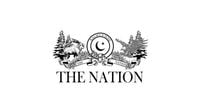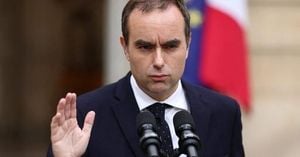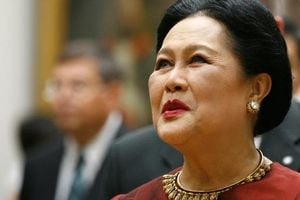Visitors to Windsor Castle this week may have noticed something missing—an absence that speaks volumes about the changing fortunes of Prince Andrew. The banner bearing his personal coat of arms, once proudly displayed among the heraldic insignia of the Order of the Garter in St George’s Chapel, has been quietly removed. This rare and highly symbolic act marks another significant step in Andrew’s ongoing separation from the public life of the British monarchy, following years of controversy and mounting public scrutiny.
The BBC confirmed on October 25, 2025, that Prince Andrew’s coat of arms was taken down from its place inside St George’s Chapel at Windsor Castle. This move came just a week after Andrew announced he would no longer use his Duke of York title—a decision made public on October 17, 2025, and swiftly reflected on the official royal website, which updated his bio to simply “Prince Andrew.” The removal of the banner was not accompanied by ceremony or fanfare, and it was not replaced, as reported by People magazine. Such quiet removals are almost unheard of in the long history of the Order of the Garter, Britain’s oldest and most prestigious order of chivalry.
Historically, banners of Garter knights remain in the chapel even after their death, serving as a lasting mark of royal favor. The act of removing one is so rare that it is typically associated with the degradation of knights for acts of treason. The symbolism, therefore, is impossible to ignore. As the BBC and The Independent have noted, the move underscores the monarchy’s efforts to protect its reputation by distancing itself from Andrew’s ongoing controversies.
Andrew’s withdrawal from the Order of the Garter and his relinquishment of the Duke of York title were part of a broader statement released by Buckingham Palace. In his words, “In discussion with The King, and my immediate and wider family, we have concluded the continued accusations about me distract from the work of His Majesty and the Royal Family,” Andrew stated. “I have decided, as I always have, to put my duty to my family and country first. I stand by my decision five years ago to stand back from public life.” He continued, “With His Majesty’s agreement, we feel I must now go a step further. I will therefore no longer use my title or the honours which have been conferred upon me. As I have said previously, I vigorously deny the accusations against me.”
The latest developments come in the wake of renewed scrutiny over Andrew’s ties to the late sex offender Jeffrey Epstein. The release of a posthumous memoir by Virginia Giuffre, titled Nobody’s Girl, has revived claims about Andrew’s alleged involvement in sexual assault—allegations he has always strenuously denied. The memoir, written before Giuffre’s death earlier this year, has added fuel to the ongoing public and political debate about Andrew’s place in the royal family.
The removal of the banner is not just a matter of optics. It represents a concrete step in stripping away the trappings of royal privilege. While Andrew no longer uses the title “Duke of York,” he technically remains both a prince and a duke. The distinction is important: as Reuters points out, fully stripping someone of a dukedom requires an act of Parliament, not a unilateral decision by the monarch. For now, Andrew remains His Royal Highness Prince Andrew, a title conferred at birth by Queen Elizabeth II. Still, royal experts widely view these moves as the closing chapter of Andrew’s public role, making any return to royal duties highly unlikely.
In the background, political pressure is mounting. Ministers and Members of Parliament have criticized Andrew’s continued residence at Royal Lodge in Windsor Great Park, where he has reportedly paid a “peppercorn rent” for more than two decades. According to The Independent, there is growing demand for a formal debate in Parliament over both his titles and the taxpayer-funded home. Yet, the government has so far refused to allocate time for such discussions, despite the controversy swirling around Andrew’s privileges.
Meanwhile, the Metropolitan Police confirmed they are “actively” investigating reports that Andrew may have attempted to obtain personal information about Virginia Giuffre through his police protection team. This revelation adds another layer of complexity to a saga that has stretched on for years, beginning with Andrew’s decision to step away from public life in 2019 after his disastrous BBC Newsnight interview and escalating with the stripping of his military titles and royal patronages in 2022, following the settlement of Giuffre’s civil lawsuit against him.
Adding to the scrutiny, documents from the High Court in London recently revealed that Andrew received £60,500 from British businessman Adrian Gleave in December 2019—a few weeks after the Newsnight interview that led to his withdrawal from public life. Gleave is linked to a wealth management company accused of defrauding pension savers, raising further questions about Andrew’s financial dealings.
Andrew has also taken steps to remove his royal titles from official business records. For his startup venture Pitch@Palace, he filed a document with Companies House changing his name from “HRH the Duke of York KG” to simply “Prince Andrew.” This administrative change reflects the broader effort to rebrand and distance himself from the honors and titles that once defined his public persona.
The Order of the Garter, founded in 1348, is the most senior order of chivalry in Britain. Its membership includes senior royals and notable figures from public life, such as former prime ministers Sir Tony Blair and Sir John Major. The removal of Andrew’s banner from the quire—the area of St George’s Chapel where clergy and choir sit—leaves only three banners hanging in the space, a stark visual reminder of his diminished status.
Public reaction to these developments has been muted but generally accepting, with major outlets like the BBC and Reuters reporting the changes as a logical next step in a long-running royal saga. For many, the removal of the banner and the relinquishment of titles reinforce the sense that Andrew’s public life as a working royal is over for good. The monarchy, for its part, continues to navigate a challenging period of modernization and public trust, seeking to protect its reputation amid ongoing scrutiny and calls for reform.
As the dust settles, one thing is clear: the quiet removal of a centuries-old banner from a castle chapel is more than a matter of royal protocol. It is a powerful symbol of a family—and a nation—coming to terms with scandal, accountability, and the evolving meaning of monarchy in the modern age.





